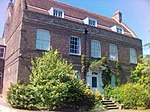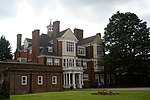National Jazz Archive

The National Jazz Archive is a collection of materials pertaining to jazz and blues that is kept at the Loughton Library in Essex, England. The archive was founded by British trumpeter Digby Fairweather in 1998 and contains visual and print materials from the 1920s to the present.Patrons of the archive have included Baroness Amos, John Altman, Liane Carroll, Deirdre Cartwright, Gary Crosby, Paul Jones, Soweto Kinch, Cleo Laine, Michael Parkinson, Courtney Pine, John Prescott, Clare Teal, Kate Westbrook, and Mike Westbrook.In 2011 the Archive was awarded a grant from the Heritage Lottery Fund. The grant enabled the cataloguing and digitisation of a substantial proportion of the collection, as well as a learning programme for schools and young people.The National Jazz Archive is a registered charity and relies on support from donations and volunteers.
Excerpt from the Wikipedia article National Jazz Archive (License: CC BY-SA 3.0, Authors, Images).National Jazz Archive
Traps Hill, Epping Forest
Geographical coordinates (GPS) Address Nearby Places Show on map
Geographical coordinates (GPS)
| Latitude | Longitude |
|---|---|
| N 51.6492 ° | E 0.059 ° |
Address
Loughton Library
Traps Hill
IG10 1DP Epping Forest
England, United Kingdom
Open on Google Maps









